Tool Test: Table Saw Combination Blades
We test nine blades from Amana, CMT, Delta, Forrest, Freud, Infinity, Ridge, SawStop, and Tenryu
Synopsis: We tested nine 40-tooth combination blades with 1⁄8-in. (standard) kerfs, using them to make crosscuts and rips in pine, cherry, and plywood to determine how smoothly and cleanly they cut. We also ripped 8/4 hard maple to discover how they managed challenging ripcuts. In the end, there is a tradeoff to be made between quality of ripcuts and speed. Because of their geometry, teeth ground to cut cleanly and smoothly do not rip quickly. So, when picking a combination blade, you must decide what you prefer: super-clean cuts or faster ripping. From issue #267—Mar/Apr 2018
In a perfect shop, you’d switch between rip and crosscut tablesaw blades so that you were always using one optimized for the cut being made. Of course, there are no perfect shops, and many woodworkers prefer to keep one blade in the saw for both types of cuts. This is why combination blades are so popular, and because of their popularity there are nearly a gazillion available at home centers, hardware and woodworking stores, and online. It’s also why the editors at Fine Woodworking asked me to test them and determine which ones make the smoothest cuts.
To make sense of the overstuffed field—and so that I wouldn’t spend all year in the shop testing sawblades—we decided to narrow the test to 40-tooth combination blades with 1⁄8-in. (standard) kerfs, because 40 teeth strike a balance between ripping and crosscutting.
Nine blades met these criteria. I used them to make crosscuts and rips in pine, cherry, and plywood to determine how smoothly and cleanly they cut. I also ripped 8/4 hard maple to discover how they managed challenging ripcuts.
In the end, the Freud Premier Fusion blade produced the best cut quality for both rips and crosscuts, but it did not rip thick, hard maple quickly. If you’re looking for a faster ripcut and don’t mind minor imperfections in the cut, then go with the Forrest Woodworker II or Ridge Carbide TS2000.
What matters more: smoothness or speed? Because of their geometry, teeth ground to cut cleanly and smoothly do not rip quickly. So, when picking a combination blade, you must decide what you prefer: super-clean cuts or faster ripping. The Freud Premier Fusion left excellent surfaces. It’s the Best Overall in that regard. At just $88, it’s also the Best Value. The Forrest Woodworker II and Ridge Carbide TS2000 have teeth that rip more quickly, and they are Best Overall blades for ripcuts. The tradeoff for that speed, however, is a cut that’s not quite as smooth or clean.
For the full article, download the PDF below.
More on FineWoodworking.com:
- BladeSaver – Easy storage for tablesaw blades
- Tablesaw Splitters and Blade Covers For Older Tablesaws – A survey of retrofit safety devices that are convenient to use
- Tablesaw Blades for Joinery – Cut joinery faster and cleaner with a set of four blades
Fine Woodworking Recommended Products

Rockler Dust Right 1250 CFM
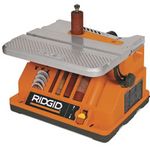
Ridgid EB4424 Oscillating Spindle/Belt Sander
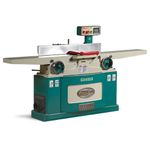
Grizzly G0495X Industrial Helical Cutterhead 8-in. Jointer

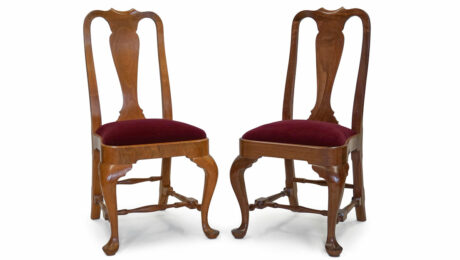
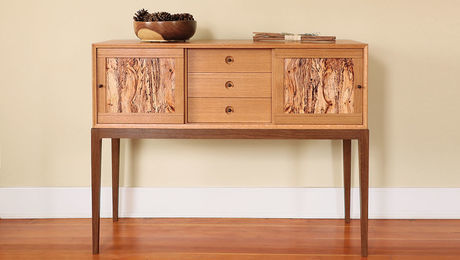
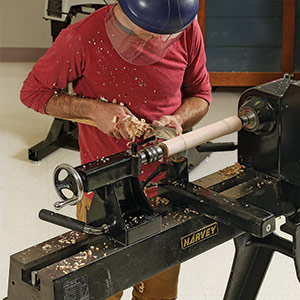


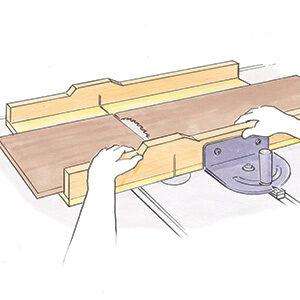





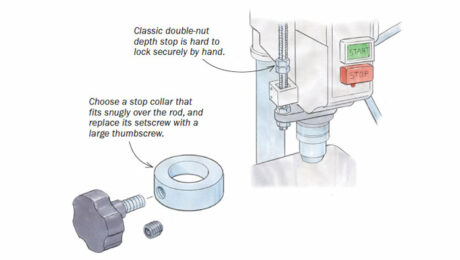
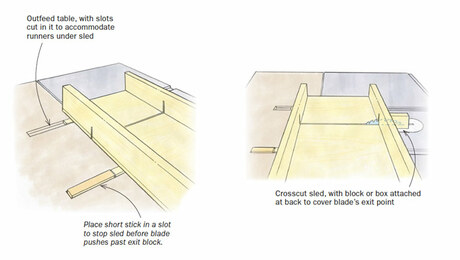
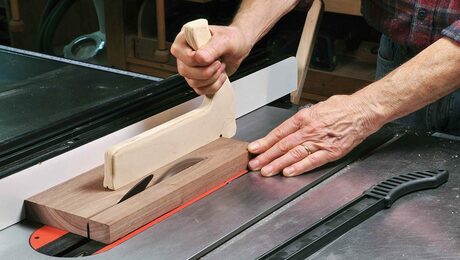








Comments
I wrote this in as well, but I feel there is one very important aspect of this article that is missing. I would say that ALMOST every saw blade I have owed cut very well right out of the box. Although not all of them stayed that way. I would like to know the longevity of these blades as well. What does the Frued look like versus the Forrest after 200 passes? One of the advantages of the Forrest is that it stays cooler resulting in less burn marks on a wood like cherry, it also stays sharper longer then most blades. Lastly I am surprised that the 60 tooth combo blade from Ghudo wasn't thrown into the mix, its a quality blade at a great price.
I have never owned a Forrest blade, somewhat out of not paying the premium so this I can offer no comparison, but you mentioned the longevity of the Freud Fusion which I have owned exactly only one of and it was the first iteration. I have only cleaned it regularly and never had it sharpened (it is likely getting due for that). I would state that I have had it in my saw for most cuts (unless I know I am going to be cutting a lot of rip cuts in which case I switch to a thin kerf Freud or full kerf CMT 24 tooth blade). My opinion of the Freud is it is a very well designed blade that is excellent for rips and crosscuts in all hardwoods (I rarely use more than 5/4 stock) and in MDF and plywood (I have a Freud blade specifically for melamine on the rare occasion I use it). The blade has kept me very happy for likely a decade now. I have been tempted to buy a blade from another manufacturer just to satiate my curiosity but this blade has performed so well I doubt I will buy anything else for my next blade. If it is $88, it is cheaper then when I bought it because I remember thinking "Man...I paid $100 for a blade".
The Ridge Carbide blades are a great investment. Quiet, smooth cutting and long lasting. I was always, as most of us are, on a very tight budget but decided to treat myself and spring for the Ridge TS2000. It wasn't an easy decision. Almost no sanding required after cutting which saves a ton of time and improves the accuracy of my projects for which I am grateful. Spend a little more and get very surprising results. Each cut makes me realize I was wasting my money on lower cost blades. Plus the carbide tips are sufficiently large enough to be sharpened several times which saves money in the long run.
garry
curiously, Freud (Diablo) does not list the blade tested. Is there another designation?
Here it is on Freud's site: http://www.freudtools.com/index.php/products/product/p410
and on Amazon: https://www.amazon.com/Freud-Generation-Crosscuts-hardwoods-P410/dp/B000JNTG76
I used to be a Forrest user, but the cost of their blades has become too high to justify continuing down that path. I have recently tried the Freud, but it didn't stay sharp very long. Albeit I was cutting 6/4 oak...even so, at $80 I expected it not to start burning so soon.
All my blades for table saw & miter saw are Forrest. The high cost is negated by the longevity between sharpening. I even have one on my Porter Cable hand saw. Also, I send them back to Forrest to be sharpened.
I've been surprised at how nice a cut some Freud blades have given for the price. The disappointment has been how quickly they lose their edge. I haven't had any luck with Forrest. Too much runout (.005 to.009 to one side) for a really good cut. I don't know if they are still in business but 10 years ago, Blade Manufacturing in Columbus Ohio had some $30 blades that did a nice job. My favorite blade by far is from W.D. Quinn Saw Co. in St. Luis, Mo. Mine have had about .002 runout, glass smooth cuts and keep their edge. They're about the same price as Forrest and have a quick turn around on sharpening. They are my go to for most everything.
Be Safe and have fun.
Log in or create an account to post a comment.
Sign up Log in